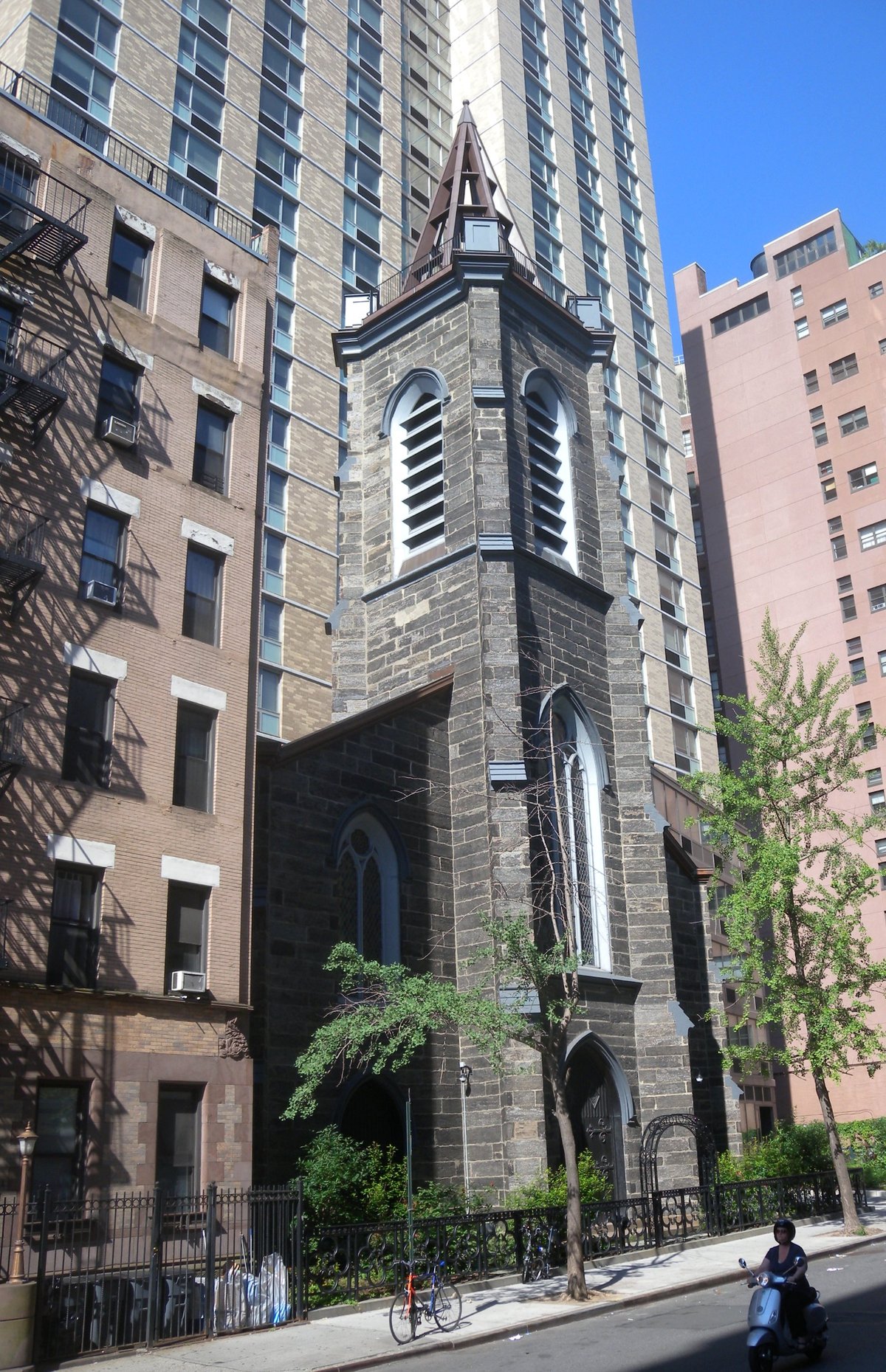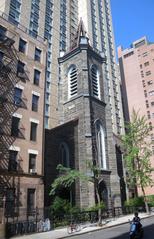
St. Ann’S Armenian Catholic Cathedral
Complete Guide to St. Ann’s Armenian Catholic Cathedral: Visiting Hours, Tickets, and New York City Historical Sites
Date: 15/06/2025
Introduction
St. Ann’s Armenian Catholic Cathedral, located in Manhattan’s East Village, is a significant religious and cultural landmark. With roots tracing back to 1852, the cathedral has served as a spiritual hub for both Catholic and Armenian Catholic communities, reflecting the evolving narrative of New York City’s immigrant heritage and architectural diversity. This guide provides a comprehensive overview of the cathedral’s history, architectural highlights, visitor information, and practical tips for those wishing to explore this unique site. For an in-depth look at parish records, cultural events, and liturgical practices, see the Roman Catholic Archdiocese of New York Archives and Armenian Church US.
Table of Contents
- History and Cultural Significance
- Visitor Information
- Community, Culture, and Events
- Frequently Asked Questions (FAQs)
- Conclusion and Recommendations
- Sources
History and Cultural Significance
Origins and Early Development
Originally established in 1852 as St. Ann’s Church, the site was constructed to serve Manhattan’s burgeoning Catholic immigrant population. The completed Gothic Revival structure quickly became a focal point for religious ceremonies and community gatherings, cementing its place in local history. Notable events such as the marriage of Eugene O’Neill’s parents in 1877 highlight its early cultural significance (Wikipedia).
Architectural Features and Artistic Heritage
The cathedral’s design showcased pointed arches, ribbed vaults, and elaborate stained glass windows. Notably, the integration of khachkars (Armenian carved stone crosses) and iconography was introduced after the site’s transition to Armenian Catholic use. Though much of the original interior has been lost, the preserved façade remains a testament to its architectural legacy.
Transition to Armenian Catholic Cathedral
In the 1980s, reflecting demographic shifts, the church was designated as the seat of the Armenian Catholic Eparchy of Our Lady of Nareg in the U.S. and Canada. The cathedral became a cultural bridge, incorporating Armenian liturgical traditions, language, and religious art. The sanctuary housed relics and iconography significant to the Armenian faith, further embedding it as a symbol of Armenian-American identity (armenianchurch.us).
Modern Decline and Legacy
By the late 20th century, structural challenges and declining attendance led to the closure and partial demolition of the church. While most of the sanctuary was lost, the iconic façade at 120 East 12th Street was preserved and integrated into new construction. Archival records and salvaged artworks remain accessible for research and cultural preservation (Roman Catholic Archdiocese of New York Archives).
Visitor Information
Location and Accessibility
Address: 120 East 12th Street, New York, NY 10003 (East Village, Manhattan)
Getting There:
- Subway: Nearest stations are 14th Street–Union Square (4, 5, 6, L, N, Q, R, W) and Astor Place (6).
- Bus: Multiple city bus routes serve the area.
- Parking: Limited street parking; several paid garages nearby.
Accessibility:
The site is pedestrian-friendly and accessible by public transport. While the original cathedral is no longer fully functional, the preserved façade is visible from the street at all times.
Visiting Hours and Ticketing
- Façade Viewing: The preserved façade can be viewed daily, 24/7, from the street; no tickets or entry fees are required.
- Cathedral Services: The Armenian Catholic community now gathers at Holy Family Roman Catholic Church in Greenpoint, Brooklyn. Services and cultural events are open to visitors; check schedules via the parish website.
Guided Tours and Special Events
- On-site Tours: There are no official guided tours at the original East Village site, but local walking tours sometimes include the location.
- Current Parish Events: The active Armenian Catholic community hosts liturgies, cultural festivals, and educational programs at their current Brooklyn location. For event calendars and guided visits, see armenianchurch.us.
Dress Code and Visitor Etiquette
- Modest dress (shoulders and knees covered) is encouraged when attending services or events.
- Silence is appreciated during worship.
- Photography for personal use is permitted outside of services; flash and tripods are discouraged.
Amenities
- Restrooms & Accessibility: Available at the active parish location in Brooklyn.
- Gift Shop: Religious and Armenian cultural items are available at the current parish.
- Quiet Spaces: Designated for prayer and reflection.
- Community Hall: Hosts lectures, concerts, and special events.
Community, Culture, and Events
St. Ann’s Armenian Catholic Cathedral has long been a center for Armenian liturgical celebrations, cultural festivals, and community outreach.
- Major Festivals: Christmas (January 6), Easter, Feast of the Assumption, and commemorations of Armenian martyrs.
- Cultural Activities: Music concerts, art exhibitions, language classes, and charity programs are ongoing at the current parish.
- Interfaith Engagement: The cathedral and parish maintain strong ties to other Christian communities and civic organizations, contributing to New York’s diverse religious landscape.
Frequently Asked Questions (FAQs)
Is St. Ann’s Armenian Catholic Cathedral open for tours?
The original church is not open for interior tours, but the façade is viewable from the street. The current parish in Brooklyn welcomes visitors for services and events.
Is there an admission fee?
No. Both the façade and parish services are free to visit; donations are appreciated.
Are guided tours available?
There are no official tours at the original site. Guided visits can be arranged at the current parish by appointment.
Is the cathedral accessible to people with disabilities?
The current parish is fully accessible, with ramps and accessible restrooms.
What should I know about attending a service?
Services are conducted in Armenian and English. Modest attire and respectful conduct are expected.
How can I access parish records?
Genealogical and historical records are held by the Roman Catholic Archdiocese of New York Archives.
Conclusion and Recommendations
St. Ann’s Armenian Catholic Cathedral stands as a symbol of faith, resilience, and cultural fusion in New York City. While the original sanctuary no longer operates, its preserved façade and the continuing activities of the Armenian Catholic community offer visitors a meaningful connection to the city’s religious and immigrant history.
- Recommendations:
- Visit the East Village façade for architectural appreciation and reflection.
- Attend services or cultural events at the Holy Family parish in Brooklyn to experience Armenian Catholic traditions firsthand.
- Explore nearby East Village landmarks such as St. Mark’s Church-in-the-Bowery and The Strand Bookstore for a broader historical itinerary.
- Stay updated on events and tours through armenianchurch.us and the Audiala app.
Sources
- St. Ann’s Armenian Catholic Cathedral: A Historical Landmark and Visitor’s Guide in New York City, 2025 (Roman Catholic Archdiocese of New York Archives)
- St. Ann’s Armenian Catholic Cathedral in NYC: Visiting Hours, Tickets, and Architectural Highlights, 2025 (Wikipedia)
- St. Ann’s Armenian Catholic Cathedral New York: Visiting Hours, History, and Cultural Significance, 2025 (Armenian Church US)
- Visiting St. Ann’s Armenian Catholic Cathedral in New York City: Hours, Tickets, and Practical Tips, 2025 (Official Parish Website)
For more in-depth articles on New York City’s historical sites and Armenian heritage, download the Audiala app and follow us on social media. Enhance your visit with interactive maps, event updates, and guided audio tours.
























































































































































































































































































